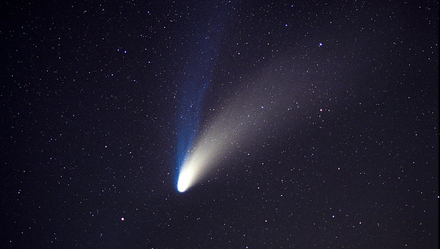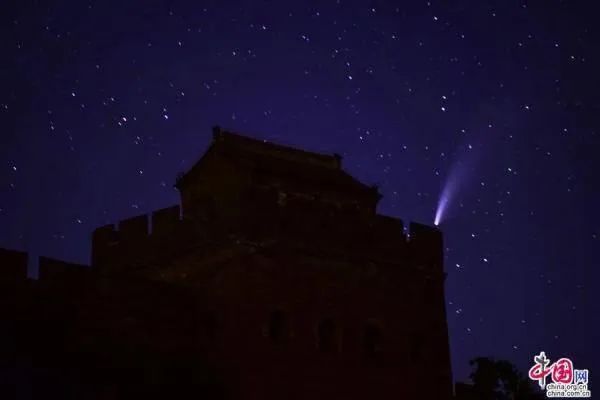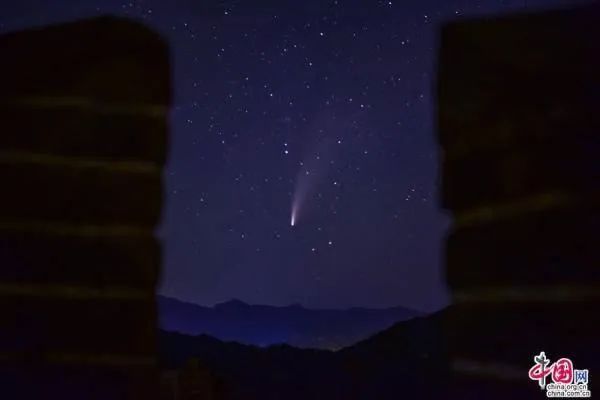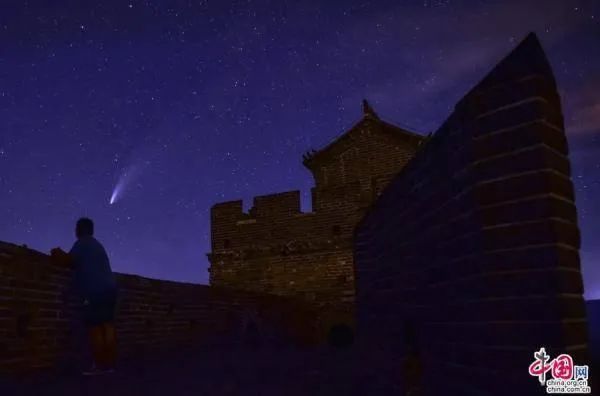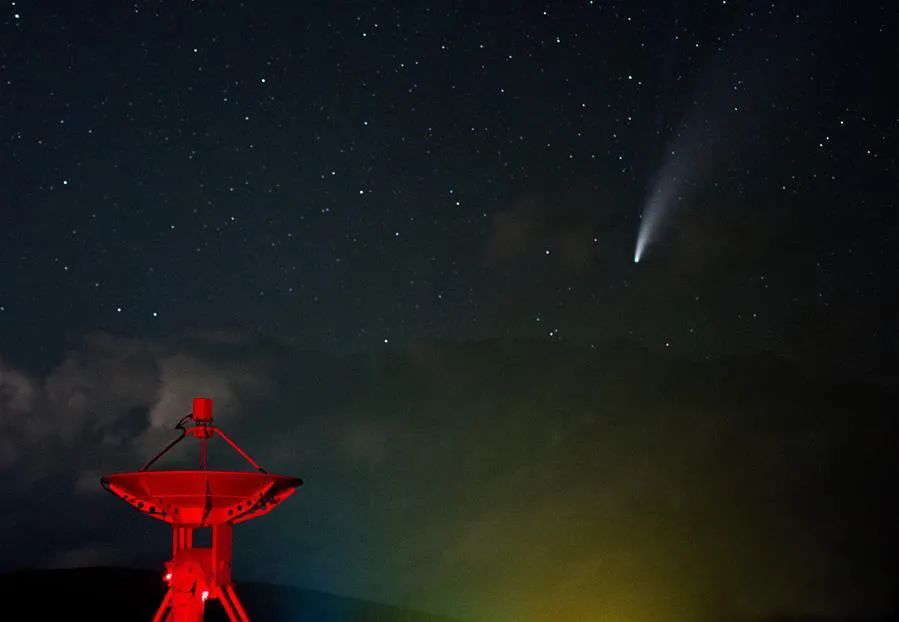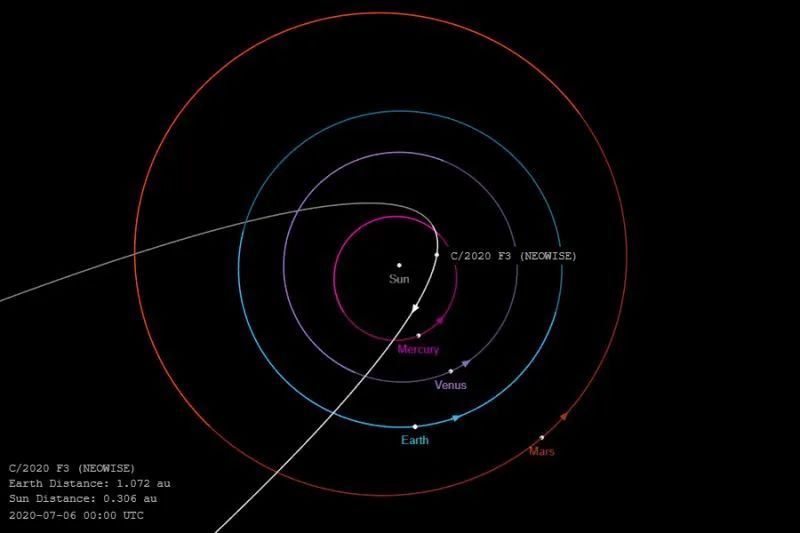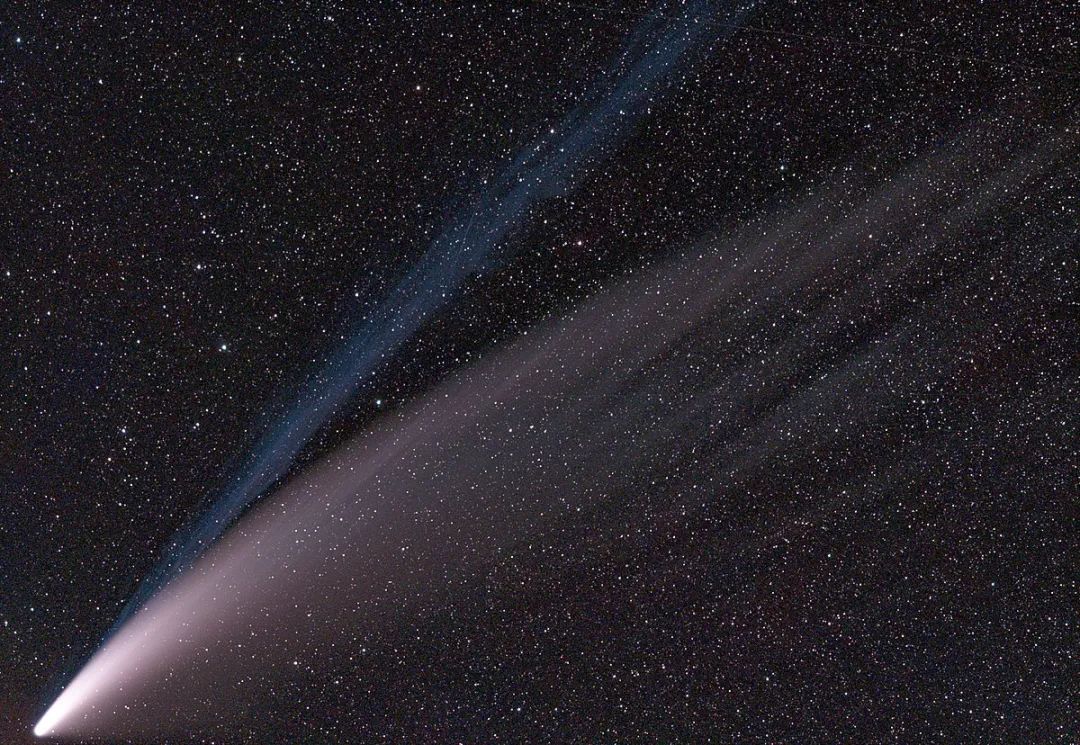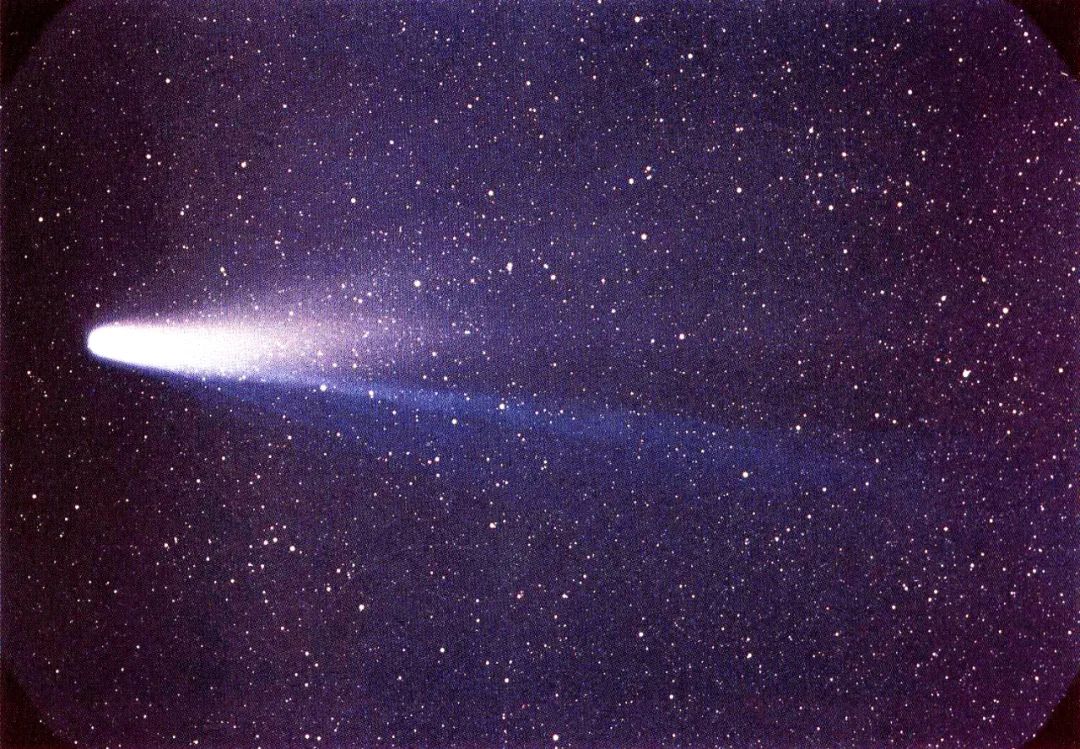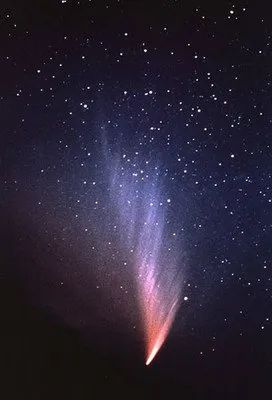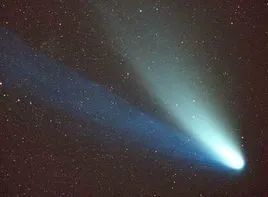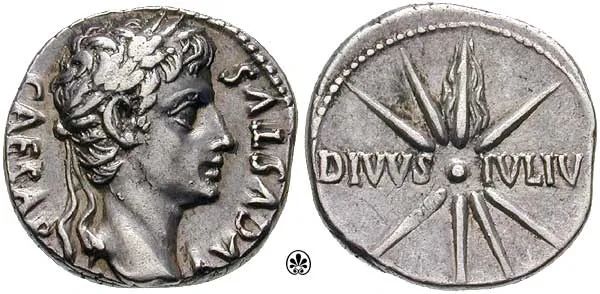近日,一颗突如其来的大彗星划过北半球夜空,引起了天文爱好者们的广泛关注。
这颗彗星是2020年3月发现的,编号为C/2020F3(Comet Neowise),全国科技名词委天文学名词审定委员会把这颗彗星中文名确定为“新智彗星”。7月中下旬的傍晚可以看到它的靓影。一开始这枚彗星亮度较低,并未引起重视,但到了6月,随着彗星逐渐接近太阳,其视星等进入裸眼可见范围,其亮度飙升,引起了大家注意。
美国《天空与望远镜》杂志称,7月14日起,人们可以试着在太阳落山后,在北斗七星下方寻找“新智彗星”;22日距离地球最近。据悉,“新智彗星”将是自1997年海尔-波普彗星以来最明亮的彗星,目前其亮度已比1986年哈雷彗星穿过内太阳系时还要高。
“新智彗星”划过明长城金山岭
天文爱好者若想较好地欣赏彗星,还需带上双筒望远镜,到郊外空旷地点进行观测。
七月底,这颗漂亮的彗星可能会消失在我们的视野里,而一旦消失,人类就只能在6800年后再见到它了。
Stargazers in the Northern Hemisphere should enjoy every opportunity to see the new Comet Neowise as it streaks across the evening sky for the rest of July.
Once it disappears from view, the comet will not be visible in Earth's skies for another 6,800 years, according to NASA.
图源:人民网
至于为什么要等6800年才能再次见到这颗彗星,原因是这颗彗星有非常长的运行轨道,光顾一次地球需要非常久。
After its closest approach to Earth, Comet NEOWISE will continue on its very long orbit to the edge of the solar system, stretching out 715 astronomical units from our sun. (As a comparison, Earth is one astronomical unit from the sun.)
在到达近地点之后,新智彗星将继续在其漫长的轨道上运行,一直到距离太阳715个天文单位的太阳系边缘。 (作为比较参考,地球是来自太阳的一个天文单位。)
This is why we won't see the comet again in our lifetimes—it takes thousands of years to travel the outer solar system before returning to the inner solar system.
这就是为什么我们在有生之年再也看不到这颗彗星的原因——在返回到内太阳系之前,它会在外太阳系飞行上千年。
彗星到底是什么
古时候,无论东方或是西方,彗星都被视为不祥的征兆,而且因为它长长的尾巴,中国民间将它称为“扫把星”。
但随着科学发展,大家都认识到彗星不过是一种天体,现代人尤其是天文爱好者都被它的美丽壮观所吸引。
和流星不同,彗星是由由松散的冰,尘埃和小岩石颗粒组成的,被称为“脏雪球”。
A comet is an icy, small Solar System body that, when passing close to the Sun, warms and begins to release gases, a process called outgassing.This produces a visible atmosphere orcoma, and sometimes also atail.
彗星是一个冰冷的小型太阳系天体,当它靠近太阳时,开始升温并释放大量的气体,这个过程被称为释气。这会产生可见的大气层即人们所说的“彗发”,有时也会产生尾巴,也就是“彗尾”。
Comets usually have highly eccentric elliptical orbits, and they have a wide range of orbital periods, ranging from several years to potentially several millions of years.
彗星通常具有偏心率的椭圆轨道,它们的轨道周期很长,从几年到几百万年不等。
Roughly one comet per year is visible to thenaked eye, though many of those are faint and unspectacular. Particularly bright examples are called"great comets".
每年大约都有一颗彗星肉眼可见,许多彗星是微弱而不引人注目的。特别明亮的彗星被称做“大彗星”。
还有哪些著名的彗星
哈雷彗星
Halley's Comet or Comet Halley, officially designated 1P/Halley, is ashort-period comet visible fromEarth every 75–76 years.
哈雷彗星,正式名称为1P/Halley,是一颗每75-76年从地球上可见一次的短周期彗星。
Halley is the only known short-period comet that is regularly visible to the naked eye from Earth, and the only naked-eye comet that can appear twice in a human lifetime.
哈雷是唯一已知的能用裸眼直接看见的短周期彗星,也是唯一的人一生中可以看见两次的彗星。
The comet's periodicity was first determined in 1705 by English astronomer Edmond Halley, after whom it is now named.
这颗彗星的周期是由英国天文学家埃德蒙·哈雷于1705年首次确定的,彗星也因此以哈雷命名。
威斯特彗星
Comet West, formally designated C/1975 V1, 1976 VI, and 1975n, was a comet described as one of the brightest objects to pass through the inner Solar System in 1976. It is often described as a “great comet”.
威斯特彗星,正式名称为C/1975 V1,1976 VI, 或 1975n,为一颗非周期彗星,被认为是1976年穿越内太阳系最明亮的天体之一。威斯特彗星有时也被称为“大彗星”。
It was discovered photographically byRichard M. West, of theEuropean Southern Observatory, on August 10, 1975.
欧洲南天天文台的天文学家李察·M·威斯特于1975年11月5日在经过曝光后的底片上首度发现威斯特彗星。
The comet came toperihelion (closest approach to the Sun) on February 25, 1976. From February 25 through the 27th, observers reported that the comet was bright enough to study during full daylight.
该彗星1976年2月25日通过近日点(最接近太阳的位置)。从2月25日至27日为止,天文观测者报告说这颗彗星非常明亮,足以在日光的影响下进行研究。
海尔-波普彗星
Comet Hale–Bopp (formally designated C/1995 O1) is a comet that was perhaps the most widely observed of the 20th century and one of the brightest seen for many decades.
海尔-波普彗星(正式编号:C/1995 O1)是20世纪观测范围最广的彗星,也是数十年来最明亮的彗星之一。
The comet was discovered independently on July 23, 1995, by two observers, Alan Hale and Thomas Bopp, both in the United States.
1995年7月23日,美国人艾伦·海尔和托马斯·波普分别独立发现该彗星。
Hale–Bopp became visible to the naked eye in May 1996, and although its rate of brightening slowed considerably during the latter half of that year, scientists were still cautiously optimistic that it would become very bright.
1996年夏天,海尔-波普彗星开始可以肉眼看见。同年下半年,它的光度增加速度放缓,但科学家仍抱持乐观态度,等待该彗星变得更光亮。
It was too closely aligned with the Sun to be observable during December 1996, but when it reappeared in January 1997 it was already bright enough to be seen by anyone who looked for it, even from large cities with light-polluted skies.
至1996年12月,由于它的天球位置太接近太阳,因此暂不能观测,1997年1月,彗星重现,并已变得更亮,在遭光污染的城市夜空也容易找到它。
凯撒彗星
Caesar's Comet (also Julian Star;Star of Caesar;the Great Comet of 44 BC; numerical designation C/-43 K1) was a seven-day cometary outburst seen in July 44 BC.
当时罗马人认为,这颗彗星是最近遇刺的罗马终身独裁官尤利乌斯·凯撒(100–44 BC)神化的象征。这可能是古代最有名的彗星。
这颗明亮的白昼彗星在罗马凯撒胜利竞技庆典时突然出现。英国天文学家爱德蒙·哈雷认为这是发生在公元前44年的9月份。但最近的研究认为这次竞技庆典应该是在公元前44年7月。
According to Suetonius, as celebrations were getting underway, "a comet shone for seven successive days, rising about the eleventh hour, and was believed to be the soul of Caesar".
据罗马帝国历史学家苏埃托尼乌斯的记载,在庆典进行的过程中,“彗星连续7天于第11时(日落前的一个小时)在天空出现,人们认为这是凯撒升天的灵魂。”
屋大维铸造的银币 (ca. 19-18 BC)。正面: 屋大维头像和CAESAR AVGVSTVS(屋大维拉丁名字);背面:DIVVS IVLIV[S](神儒略,追凯撒为神后的尊称),图案为放射出八条光芒的彗星(星星),彗尾向上。图源:维基百科

